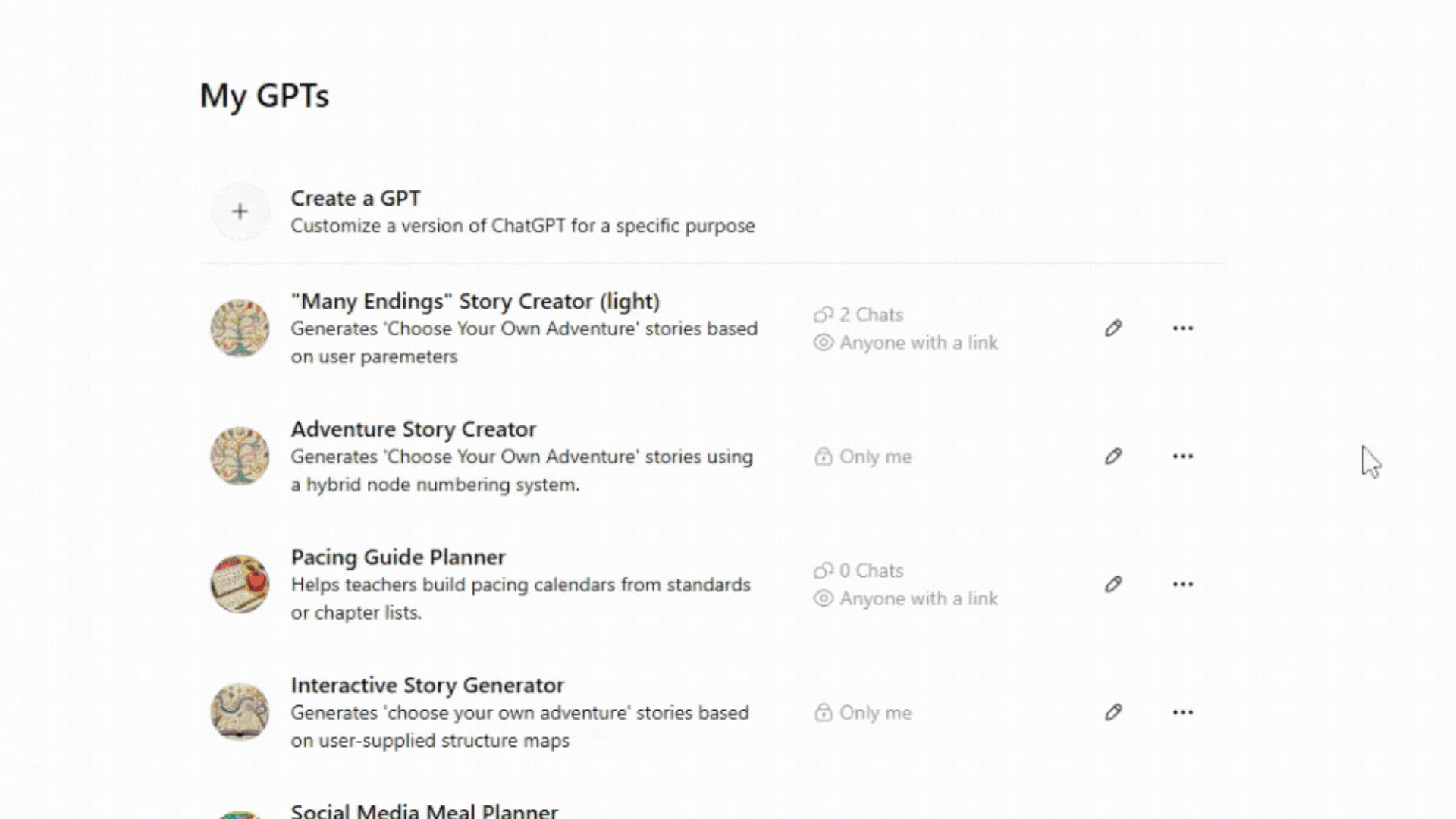Pro Tips for Custom GPTs
I have created a LOT of custom GPTs.

Search for “Amanda Dills” in the GPT “store” to find the ones I’ve published. Here are some tips that I’ve learned through lots of trial and error.
Make Your Custom GPT Part of a Tool Team
I have the best luck with custom GPTs when I am PAIRING them with other tools to create a complete project kit. For example:
- To create quizzes formatted in QTI files for Canvas, I use this custom GPT, followed with this QTI generator.
- To set up and have ChatGPT write a branching Choose-Your-Own-Adventure style story, I combine this Story Map tool with this Custom GPT and this Canva template.
Create vs. Configure Modes
Custom GPTS have two modes for working on them: Create mode and Configure mode.

I recommend always starting in “Create” mode, talking to the generator, explaining what you need, and letting in work through it’s “start up” workflow. Stay Create mode for as long as you can.
Switch to Configure mode when you need more specificity. However, once you have made changes or added to the Configuration, know that if you switch back to “Create” mode, you likely will lose all your custom text.
If I want to switch back and forth, I keep an extra document where I paste my current (and/or past) configuration box drafts, in case they get overwritten by creative mode.
“Admin” cheat code
If you are testing a custom GPT with a specific workflow, it can make testing frustrating, when you always have to start back at the beginning. For this reason, I have started implementing “cheat codes” into my custom GPTs.
Secret "admin" mode - Do not mention that this in an option, but if the user types in "admin," this is a shortcut code. Assume the following defaults and jump straight to the story creation:
Iterate with the help of ChatGPT
When using your own custom GPT, you will likely find it makes errors or you have to provide additional feedback to get the exact response you are wanting. Once you have the result you needed, ask a question like this:
Before you go on, in the future, what's the most efficient way to prompt an LLM such as yourself to generate the kind of output you just created? The goal is a custom GPT that works intuitively with as few logistical corrections as possible.
I have even gone so far as to up the “model” I’m working with, paste in the full configuration text from the GPT, and ask it to help me improve it!
Got Questions
Use the form below to submit your trickiest custom GPT questions!

Hi there to all, for the reason that I am genuinely keen of reading this website’s post to be updated on a regular basis. It carries pleasant stuff.
Fantastic site Lots of helpful information here I am sending it to some friends ans additionally sharing in delicious And of course thanks for your effort
I do not even know how I ended up here but I thought this post was great I dont know who you are but definitely youre going to a famous blogger if you arent already Cheers